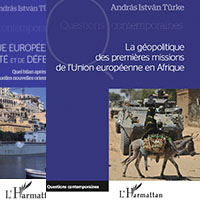You are here
European Parliamentary Research Service Blog
European Parliament Plenary Session – September 2025
Written by Clare Ferguson.
Members gather in Strasbourg from 8 to 11 September, as Parliament holds the first plenary session after the summer break. The week’s agenda includes a focus on geopolitical challenges to policy and the need for simplification, ahead of negotiations on the next EU budget.
The president of the European Commission delivers the annual State of the European Union each September. This month, Members are set to hear Ursula von der Leyen’s fifth State of the Union address, and the first of this mandate, in a key debate on Wednesday morning. In outlining the Commission’s main priorities and flagship initiatives for the year, President von der Leyen is likely to focus on the EU response to the current geopolitical challenges to the Union’s prosperity and competitiveness – areas which are already the clear focus of the seven priorities set by the von der Leyen II Commission. The Council and Commission are expected to make statements later on Wednesday on the implementation of the EU-US trade deal and the prospect of wider EU trade agreements.
On Tuesday morning, Maia Sandu, President of the Republic of Moldova, is scheduled to address Parliament in a formal sitting. This will be President Sandu’s first address since 2022, following her election in 2024, and the first since the country’s constitutional referendum on EU accession. The EU opened accession negotiations with Moldova in June 2024. Council and Commission statements are expected later in the day on strengthening Moldova’s resilience against Russian hybrid threats and malign interference.
In the meantime, the situation of Ukraine has not improved. Members are scheduled to hear a statement on Tuesday morning by the High Representative of the Union for Foreign Affairs and Security Policy/Vice-President of the Commission on EU action to ensure security guarantees and just peace for Ukraine. With Ukraine an EU membership candidate since 2022, Members will also debate a Committee on Foreign Affairs (AFET) report on the Commission’s 2023 and 2024 reports on Ukraine. The committee notes Ukraine’s consistent commitment to its European path, despite Russia’s war of aggression, and stresses the need for a peaceful solution that respects the will of the Ukrainian people. It also calls for an EU contribution to robust security guarantees for Ukraine, and recommends opening negotiating clusters. Nevertheless, the AFET committee also emphasises that Ukraine needs to step up its fight against corruption, including by granting greater independence to the Specialised Anti-Corruption Prosecutor’s Office.
In line with the EU’s simplification priority, several files on the agenda focus on streamlining EU policy and cutting red tape. One such initiative responds to the need to simplify EU funding, as well as to widespread farmer protests, by proposing new rules for the common agricultural policy (CAP) from 2028. Members are scheduled to vote on Wednesday on a report from the Committee on Agriculture and Rural Development (AGRI) that opposes the Commission’s plans to include agricultural funding in a single fund covering structural and cohesion policy, fisheries, security and defence. The AGRI committee suggests increasing funding for agriculture in the post-2027 CAP budget instead, and to reinforce direct income support for farmers, regardless of their size, as well as increasing support for smaller and family-run farms.
Unfortunately, in the EU, we waste 60 million tonnes of food, and 12.6 million tonnes of textiles, every year. To protect the environment and ensure the sustainable use of our resources, the Commission has proposed to update the Waste Framework Directive. Members are due to vote on Tuesday on a provisional agreement on the proposal, reached between Committee on the Environment, Public Health and Food Safety (ENVI) and Council negotiators earlier this year. The agreed text would introduce binding food waste reduction targets, where Parliament’s negotiators succeeded in ensuring the rules will facilitate donations of unsold food. The revised Waste Framework Directive will also include new, harmonised extended producer responsibility rules covering fast fashion practices for all producers – even if not based in the EU – except, on Parliament’s insistence, those involved in reuse and recycling.
On Tuesday afternoon, Members are set to debate three reports from Parliament’s Committee on Regional Development (REGI) calling for increased EU cohesion policy support for citizens. The first proposes strengthened cohesion policy support for regions most affected by the need to transition towards a climate-neutral economy. Acknowledging that geopolitical shifts are disrupting the economy, the committee recommends prioritising just transition funding for areas where traditional industries are disappearing, and calls for continued and increased cohesion policy funding for a just transition, beyond 2027. It also proposes simplifying access to cohesion funding, establishing special economic zones, and greater investment in education and training. The second REGI report recommends increased and more flexible cohesion policy funding for housing, beyond the current focus on social housing and energy efficiency. As housing availability has become a major issue throughout the EU, the committee also suggests cohesion policy funding for housing prioritises increased access to housing, through innovative approaches that increase affordability. Finally, the third report considers plans to simplify EU cohesion funds more generally, where the REGI committee seeks assurance that modernisation to improve implementation can be carried out without sacrificing the current focus on long-term investment and place-based rationale. The report reiterates the importance of local involvement in programming, delivering and monitoring projects, and recommends simplifying cohesion funds by earmarking resources for integrated territorial development tools, direct funding for cities, and eliminating duplication of national oversight.
National, regional or local public bodies spend around €2 trillion of citizens’ contributions per year in the EU through the public procurement process. Open public procurement in a competitive market should deliver good quality works or goods and services that represent value for money. However, complex procedures may have contributed to a decline in competitive procedures where EU rules apply to contracts above a certain threshold. On Monday evening, Members are due to debate a report from Parliament’s Internal Market and Consumer Protection Committee (IMCO), which calls on the Commission to simplify the procedures to make it easier for companies to bid for such contracts. The IMCO report also highlights the need to uphold EU social and environmental standards and support local economic development through the public procurement procedure.
Finally, on behalf of the Economic Affairs (ECON) Committee, Members are set to ask questions of the Commission on Wednesday evening regarding the fair taxation of large digital platforms. International corporate tax rules were comprehensively overhauled under the umbrella of the Organisation for Economic Co-operation and Development in 2021. Under Pillar One, countries where customers or users are located are granted the right to tax a share of those profits, irrespective of the company’s physical presence. Pillar Two establishes a 15 % minimum effective corporate tax rate for multinational companies. While Pillar Two is in force in the EU since 2024, Pillar One has yet to be enforced, as the US argues it disproportionately targets American firms. Members are likely to ask the Commission if a unilateral EU-level digital tax could be considered in the absence of an international agreement on taxation of digital platforms. A Commission statement is also expected on the renewal of the mandate of the Internet Governance Forum.
- The policy priorities of the von der Leyen II Commission: State of play ahead of the 2025 State of the Union address
- 2025 State of the Union address: Purpose, historical significance and overview of addresses since 2010
- Public procurement
- Revising rules on food and textile waste
- The role of cohesion policy in supporting the just transition
- The role of cohesion policy in resolving the housing crisis
- Simplification of cohesion funds
- 2023 and 2024 Commission reports on Ukraine
- Future of agriculture and the post-2027 CAP
- Taxation of large digital platforms in light of international developments
Pages
- « first
- ‹ previous
- 1
- 2
- 3
- 4
the old site is here







